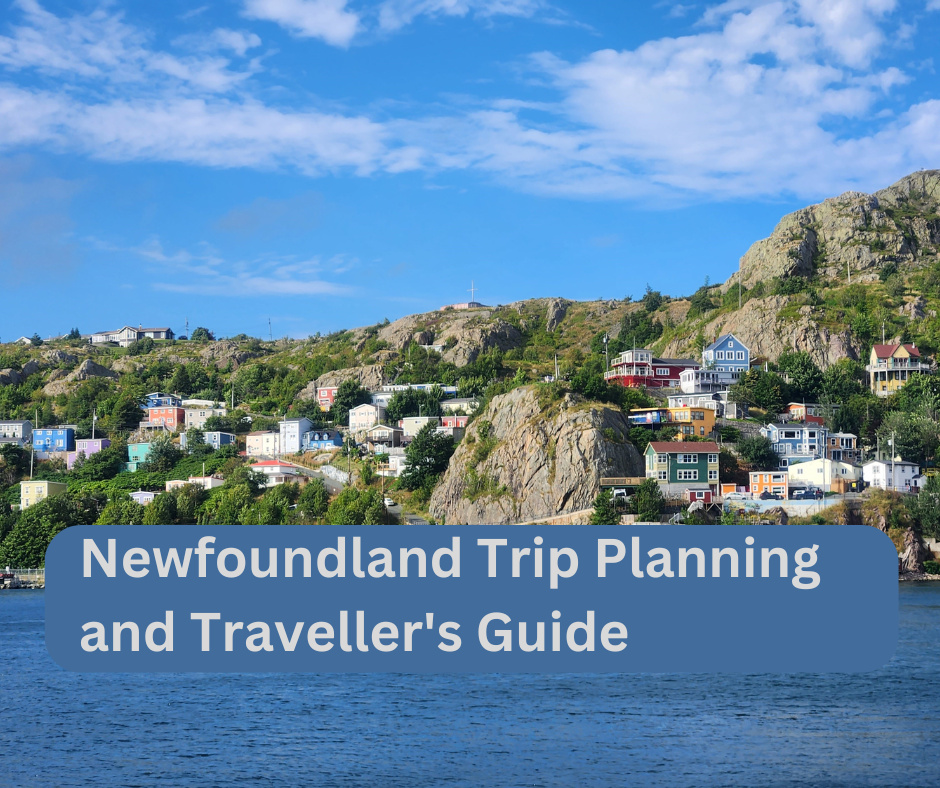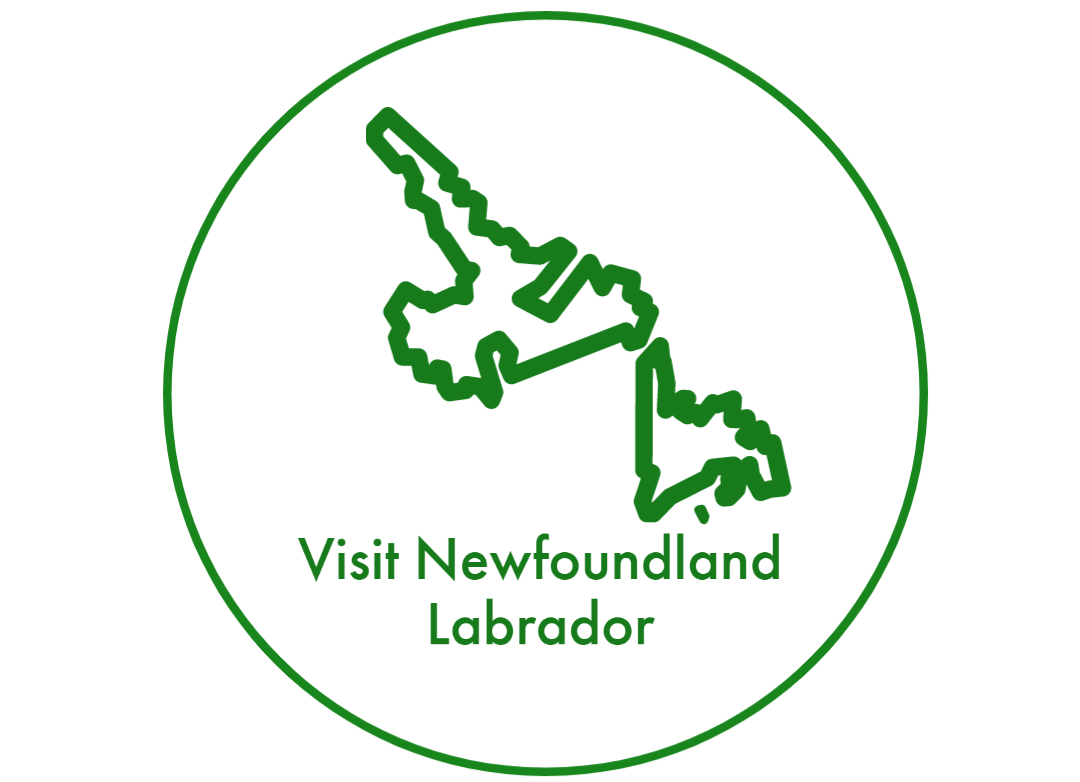How To get screeched in and become an honorary Newfoundlander
This is How To get screeched in and become an honorary Newfoundlander. Screeching in is a popular Newfoundland tradition. It’s a ceremony that welcomes new friends, family and neighbours into the community and culture of Newfoundland. The screech-in ceremony is not an official part of the Newfoundland culture, but it has become very popular as more people move to the island province. It’s essentially just an informal party. You can even do it at home. The idea behind the screech-in is to give newcomers a taste of Newfoundland culture and to help them feel at home.
The screech-in ceremony is often done by groups of locals who want to welcome a new person into the community. It’s usually held at someone’s house or apartment, although some people have been known to do it in public places such as bars and restaurants. Plan ahead and find places to eat, drink, and get Screech in. Start your planning here.

Screech In Newfoundland
Screech is a traditional Newfoundland drink that’s been around for decades. This drink is traditionally served as a shot, but you can add it to cocktails or mix it with other booze if you want some variety. Screech has a very strong taste, and it can be hard to get used to. Some of the best ways to drink screech are mixing it with ginger ale or tonic water, which helps cut down on some harshnesses.
Getting Around Newfoundland and Labrador
Booking a Rental car is the easiest way to get around Newfoundland and Labrador. The province is vast and remote, and public transportation can be limited. A car rental lets you explore at your own pace and visit off-the-beaten-path destinations.
Getting screeched in Newfoundland
Screeching, which is the act of drinking a shot of screech and then pouring another on top for good measure, is an integral part of any visit to Newfoundland. To get screeched in as an honorary Newfoundlander, you’ll need to be invited by someone who has been appropriately initiated themselves. It would help if you also were a first-time visitor. Finally, you will kiss a codfish to complete the process.

Places to get screeched in Newfoundland
If you’re looking to be screeched in, a few places are sure to make the experience memorable. Many sites offer this ceremony, but we recommend going to these places.
The Screech Room
It is located at 6 Cathedral Street, St. John’s. There, you’ll have an opportunity to make friends with other people who have come from all over Canada and around the world for various reasons. Some were born in Newfoundland, and others moved here later on in life and then be part of an experience where you’ll learn about how they got here through stories told by locals who know their history well enough that they can share it with those visiting Newfoundland for their first time.
Trapper John’s Screech In Pub:
This is a great place to be screeched in. You can even take your picture with the codfish after kissing it! The Pub is located in downtown St. John’s, Newfoundland and Labrador and is one of the best places where you can be screeched in legally.
Address: 371 Duckworth Street, St. John’s, NL
Phone:709-579-9630
Christian’s Pub
This is another great place to get screeched in. This Pub is located in downtown St. John’s, on George Street and is the ideal place to be screeched in to become an honorary Newfoundlander. The Pub has a full menu and offers a variety of drinks, including beer and spirits.
Address: 23 George Street, St. John’s, NL
Phone:709-753-9100
There are plenty more places to get screeched in Newfoundland and Labrador. Leave a comment below of the place you get screeched in.

Why Get Screeched in?
You might be wondering why you should get screeched in. Screeching is a fun and exciting way of welcoming new people and visitors into the province, and it’s an important part of Newfoundland welcoming culture. Here are some reasons why:
- It’s a great way to learn about the heritage of your new home.
- It helps you meet and get together with new people who share your interests.
- It can be a fun activity for friends and family members who have moved away from home together.
How to get screeched in Newfoundland.
Screeching in is a Newfoundland tradition that occurs when you are accepted into the community. It’s a lot like being born again, but this time as an honorary Newfoundlander.
Screeching in can be done solo or with friends and family, but it’s always better to have someone to share the experience with. You don’t need much preparation for screeching in. Just make sure to bring along some rum, a bottle of Screech will do. Some friends who have been screeched before, and make sure you kiss the cod fish.
Once everyone arrives at your house, party, or secret location where you’ll screech in each other in as Newfoundlanders, the first thing on everyone’s mind will be, “Can we drink now?” The answer is yes.
If you’re looking to get screeched in and learn more about Newfoundland culture, there are plenty of places to do so. It’s an opportunity for newcomers and an experience that locals can enjoy.
Travelling to Newfoundland and Labrador. Travelers also ask.

Is St. John’s, Newfoundland, worth visiting?
St. John’s, the capital, is worth visiting. St. John’s offers a rich cultural heritage, a vibrant arts scene, and breathtaking natural landscapes. Known for its colourful row houses, historic sites like Signal Hill, and picturesque harbour, St. John’s provides a unique blend of natural beauty. The city’s friendly locals, lively music scene, and excellent seafood add to its charm, making it a must-visit destination.
What is St. John’s, Newfoundland, famous for?
St. John’s is famous for several things:
- Signal Hill: This historic site offers panoramic views, and the Cabot Tower is where the first transatlantic wireless communication was received.
- George Street is renowned for its nightlife, with the most bars and pubs per capita in North America.
- Colourful Row Houses: Known as Jellybean Row, these brightly painted homes are iconic.
- Rich History: As one of the oldest cities in North America, it has a rich maritime history and cultural heritage.
How many days does it take to visit St. John’s, Newfoundland?
To fully experience St. John’s and its surroundings, a visit of 4 to 5 days is recommended. This allows time to explore the city’s historical sites, enjoy the local cuisine, enjoy the nightlife on George Street, and venture out to nearby natural attractions such as Cape Spear and Quidi Vidi Village.
Is St. John’s, Newfoundland, a walkable city?
Yes, St. John’s is a walkable city, especially in the downtown area, where many attractions, restaurants, and shops are concentrated. The city’s hilly terrain can be challenging, but it also offers beautiful vistas and charming streets to explore on foot.
What is the best month to visit Newfoundland?
The best months to visit Newfoundland are from late June to early September. The weather is milder during this period, and you can enjoy outdoor activities like hiking, whale watching, and iceberg spotting. July and August are viral for tourists.
What is the best time of year to visit St. John’s, Newfoundland?
The best time to visit St. John’s is during the summer, from June to early September, during this this time the weather is warm and many festivals and events occur. This is also the peak season for whale-watching and iceberg viewing.
Is St. John’s Newfoundland expensive?
St. John’s can be moderately expensive, especially during peak tourist season. Accommodation, dining, and activities can add up, but budget-friendly options are also available. Compared to larger Canadian cities, St. John’s is relatively affordable.
Is Newfoundland expensive to visit?
Newfoundland is not excessively expensive to visit, but costs can vary depending on the time of year and type of accommodation. While certain activities and dining experiences may be costly, there are plenty of free or low-cost activities to enjoy.
What is the famous street in St. John’s, Newfoundland?
George Street is famous in St. John’s for its vibrant nightlife and numerous bars and pubs. George Street is a popular spot for locals and tourists looking to experience live music and socialize.
Can you get around St. John’s without a car?
Yes, you can get around St. John’s without a car, especially downtown, where many attractions are within walking distance. You’ll have access to convenient transportation options, such as public transportation, taxis, and ride-sharing services.
How long is the ferry ride from Nova Scotia to St. John’s, Newfoundland?
There is no direct ferry to St. John’s. However, you can take a ferry from North Sydney, Nova Scotia, to either Argentia (a 16-hour ride) or Port aux Basques (a 6–8-hour ride) in Newfoundland. From there, you must drive to St. John’s, which takes approximately 1.5 hours from Argentia or 9 hours from Port aux Basques.
How long does it take to drive around St. John’s?
Driving around St. John’s can take about an hour, depending on traffic and stops. Exploring the greater St. John’s area, including nearby attractions like Cape Spear and Quidi Vidi, can take several hours.
What is the crime rate in St. John’s, Newfoundland?
St. John’s has a relatively low crime rate compared to other Canadian cities. While it experiences typical urban crime, it is generally considered a safe place for residents and visitors.
How cheap is Newfoundland?
Newfoundland is relatively affordable compared to other parts of Canada. While some areas, especially St. John’s, can be expensive, smaller towns and rural areas, however, offer more budget-friendly options for accommodation and dining.
What is the best way to tour Newfoundland?
The best way to tour Newfoundland is by car. This allows you to explore the island’s diverse landscapes, remote villages, and natural attractions at your own pace. Renting a car is recommended if you’re flying into the province.
In what month do you see icebergs in Newfoundland?
Iceberg season in Newfoundland typically runs from late May to early June, though icebergs can sometimes be seen as late as July. The best month for iceberg viewing is usually June.
What is the best month to see icebergs in Newfoundland?
June is generally the best month to see icebergs in Newfoundland. This is when most icebergs drift along the coast, providing spectacular viewing opportunities.
When can I see puffins in Newfoundland?
Puffins can be seen in Newfoundland from late May to early September. The best months to see them are June and July when they are most active during their breeding season.
What is the wettest month in Newfoundland?
October is typically the wettest month in Newfoundland, and it experiences the highest average rainfall.
When can you see whales in St John’s, Newfoundland?
Whale-watching season in St. John’s is from mid-June to mid-August. During this time, humpback, minke, and other whale species migrate through the waters of Newfoundland.
What should I pack for St. John’s, Newfoundland?
When visiting St. John’s, pack layers to accommodate varying weather conditions. Essentials include:
- Waterproof jacket and footwear
- Warm clothing (sweaters, hats, gloves)
- Comfortable walking shoes
- Sunscreen and sunglasses
- Cameras and binoculars for wildlife and iceberg viewing
Can you see the Northern Lights from Newfoundland?
You can watch the Northern Lights (Aurora Borealis) from Newfoundland, particularly in low-light pollution areas. The best time to see them is from late fall to early spring.
Where is the best place to see whales and icebergs in Newfoundland?
Twillingate and Bonavista are Newfoundland best places to see whales and icebergs. These coastal areas offer excellent viewing opportunities and tours.
Are there polar bears in Newfoundland?
Polar bears are occasionally seen in the northern parts of Newfoundland and Labrador, particularly in the Labrador region. They are not commonly found in Newfoundland itself.
How long does it take to drive from one end of Newfoundland to the other?
Driving from the western end of Newfoundland (Port aux Basques) to the eastern end (St. John’s) takes approximately 9–10 hours without significant stops.
Is Fogo Island worth visiting?
Fogo Island is worth visiting for its unique culture, stunning landscapes, and renowned Fogo Island Inn. It offers a distinctive experience of Newfoundland’s heritage and natural beauty.
How often can you see northern lights in Newfoundland?
The Northern Lights can be seen in Newfoundland several times a year, particularly during periods of high solar activity. The best times are during winter when nights are longer and darker.
What is the best time to see the Northern Lights?
The best time to see the Northern Lights is during the winter, from late September to early April, particularly around midnight or early morning.
How long is the ferry ride to Fogo?
The ferry ride to Fogo Island from Farewell, Newfoundland, takes approximately 45 minutes to an hour.
How much is the ferry to Fogo Island?
As of the latest information, the ferry to Fogo Island costs around $15–20 CAD per vehicle and additional fees for passengers, but prices can vary, so it’s best to check current rates.
What is so special about Fogo Island?
Fogo Island is unique for its rugged natural beauty, traditional outport culture, and the acclaimed Fogo Island Inn. It’s known for its artistic community, distinctive architecture, and stunning coastal Scenery.
Are there narwhals in Newfoundland?
Narwhals are typically found in Arctic waters and are uncommon in Newfoundland.
Are there dolphins in Newfoundland?
Yes, dolphins can be seen in the waters around Newfoundland, including species like the Atlantic white-sided dolphin and the common dolphin.
Are there killer whales in Newfoundland?
Killer whales (orcas) are occasionally sighted around Newfoundland, especially during summer.
What is Cape Spear known for?
Cape Spear is known for being the easternmost point in North America. It features a historic lighthouse and offers stunning 180-degree views of the Atlantic Ocean, making it a popular tourist spot.
Where can I see whales in Newfoundland?
Some of the best places to see whales in Newfoundland include:
- St. John’s and Cape Spear
- Trinity and Bonavista
- Twillingate
- Witless Bay Ecological Reserve
How do you see puffins in St John’s?
To see puffins near St. John’s, visit the Witless Bay Ecological Reserve island, which is home to large colonies of puffins. Boat tours from Bay Bulls can take you close to the puffin nesting sites.
How long do you need to see Newfoundland?
Plan to spend at least 7–19 days to see Newfoundland highlights. This allows enough time to explore St. John’s, the Avalon Peninsula, Gros Morne National Park, and other key attractions.
When should I go to Newfoundland?
The best time to visit Newfoundland is from late June to early September when the weather is mild. You can enjoy outdoor activities, events, and festivals. This period is also ideal for whale-watching and iceberg-viewing.
Can you see icebergs in Newfoundland now?
Icebergs are typically seen off the coast of Newfoundland from late spring to early summer. The best months for iceberg viewing are usually May and June. If it’s within this timeframe, you can likely see icebergs, especially in areas like Twillingate and St. Anthony.
When to see icebergs in Twillingate?
The prime time to see icebergs in Twillingate is from late May to early June. This period offers the highest likelihood of witnessing these massive ice formations as they drift southward along the coast.
Where is the best place to see icebergs?
The best places to see icebergs in Newfoundland include Twillingate, St. Anthony, Bonavista, and Fogo Island. Twillingate is often called the “Iceberg Capital of the World” due to its high iceberg count and accessibility.
What is the best month to see icebergs in Newfoundland?
The best month to see icebergs in Newfoundland is May. During this month, the icebergs are plentiful, and the weather is often more favourable for boat tours and coastal viewing.
How long do icebergs last in Newfoundland?
Icebergs can last from a few weeks to several months in Newfoundland waters. Their longevity depends on their size, the water temperature, and the weather conditions. Typically, icebergs seen off Newfoundland begin their journey from Greenland and take about 1-2 years to reach the island.
Where is Newfoundland Iceberg Alley?
Iceberg Alley refers to the stretch of ocean off the coast of Newfoundland and Labrador, where icebergs are commonly seen. It extends from the coast of Labrador down through Newfoundland’s eastern shore, including areas like Twillingate, St. Anthony, and Bonavista.
Are there icebergs in Newfoundland in August?
By August, the number of icebergs in Newfoundland significantly decreases. While it’s possible to see the occasional iceberg, they are much rarer than the peak months of May and June.
What month is the warmest in Newfoundland?
July is typically the warmest month in Newfoundland, with a temperatures ranging from 15°C to 20°C. This makes it a popular time for visitors seeking to explore the island’s natural beauty.
Where to see whales in Newfoundland?
Whale watching is popular in Newfoundland from June to September. The best locations include St. John’s, Trinity, Bonavista, and Witless Bay Ecological Reserve, renowned for its abundant marine life, including humpback whales.
Can you see the Northern Lights from Newfoundland?
You can see the Northern Lights from Newfoundland, particularly in the more northern and remote parts of the island. The best times are during the fall and winter when the nights are the longest and the skies are the darkest.
How close to Newfoundland did the Titanic sink?
The Titanic sank about 370 miles south-southeast off the coast of Newfoundland. The nearest land to the wreck site is the southeastern tip of Newfoundland.
How close is the Titanic to Newfoundland?
The Titanic’s wreck is located approximately 370 miles off the coast of Newfoundland. This proximity made Newfoundland a critical point in the communication and rescue efforts following the disaster.
Where did the Titanic sink off Newfoundland?
The Titanic sank in the Atlantic Ocean, approximately 370 miles south-southeast of Newfoundland coast.
Are there polar bears in Newfoundland?
Polar bears are not native to Newfoundland itself, but they occasionally appear on the northern coast of Labrador, particularly when sea ice drifts south from the Arctic.
What is the iceberg capital of Canada?
Twillingate, a small coastal town in Newfoundland, is known as the “Iceberg Capital of the World” due to its frequent and spectacular iceberg sightings during the peak season.
How fast do icebergs move?
Icebergs generally drift at about 0.7 kilometres per hour (0.4 miles per hour). However, their speed can vary depending on ocean currents, winds, and the iceberg’s size.
Why are icebergs sometimes black?
Icebergs appear black when they contain a high amount of sediment and debris. This can occur when icebergs calve off glaciers that scrape the land, picking up rocks and soil, which then get frozen into the ice.
Does the Atlantic Ocean in Newfoundland freeze?
The Atlantic Ocean around Newfoundland does not freeze over due to its relatively warmer temperatures than Arctic waters. However, sea ice and icebergs from the Arctic can drift into Newfoundland waters, especially during the spring.
Are there puffins in Twillingate?
While puffins are not commonly found in Twillingate, they are prevalent in other parts of Newfoundland, such as the Witless Bay Ecological Reserve. Twillingate is more famous for its iceberg and whale sightings.
What is the best time to see whales in NL Newfoundland?
The best time to see whales in Newfoundland is from June to September. Humpback whales, minke whales, and other species migrate through Newfoundland coastal waters during this period.
Is the tip of the iceberg visible?
Yes, the tip of the iceberg is visible above the water, but it represents only about 10% of its total mass. The remaining 90% is submerged underwater, making icebergs particularly dangerous for ships.
Can you see icebergs in Newfoundland in July?
Yes, you can still see icebergs in July in Newfoundland, although they are less common than in May and June. By July, many icebergs have drifted further south or melted.
Where is the best place to see icebergs?
Twillingate, St. Anthony, Bonavista, and Fogo Island are the best places to see icebergs in Newfoundland. These locations offer optimal viewing points and tour opportunities.
How often can you see northern lights in Newfoundland?
The Northern Lights can be seen in Newfoundland several times a year, especially in the fall and winter months. The frequency depends on solar activity and the clarity of the night skies.
Why is it called Iceberg Alley?
The stretch of water known as Iceberg Alley gets its name from the numerous icebergs that travel through this area each year. The icebergs originate from Greenland and drift down the Labrador Current past Newfoundland and Labrador.
When should I visit Iceberg Alley?
The best time to visit Iceberg Alley is from late May to early June. During this period, the highest concentration of icebergs can be seen, offering the most spectacular views.
Can you swim in Newfoundland in August?
Yes, you can swim in Newfoundland in August, especially in the warmer, sheltered areas like lakes and coves. However, the ocean waters remain pretty cold, typically around 12-15°C, so swimming in the sea can be chilly.
How hot is Newfoundland in July?
Newfoundland experiences its warmest weather in July, with a temperatures ranging from 15°C to 20°C. Some days can be warmer, especially inland and away from the coastal breezes.
What is Cape St. Mary’s Ecological Reserve famous for?
Cape St. Mary’s Ecological Reserve is famous for its spectacular seabird colony, particularly the Northern Gannets. It’s one of Newfoundland and Labrador most accessible seabird colonies, where visitors can observe thousands of seabirds nesting on the rugged cliffs.
When is the best time to visit Cape St. Mary’s Ecological Reserve?
The best time to visit Cape St. Mary’s Ecological Reserve is from late spring to early fall, particularly between May and September, when the seabirds are nesting and most active.
How do I get to Cape St. Mary’s Ecological Reserve?
Cape St. Mary’s Ecological Reserve is on the Avalon Peninsula in Newfoundland. From St. John’s, it’s a two-hour drive southwest. Visitors can drive south to St. Bride’s and follow the signs to the reserve.
What types of birds can be seen at Cape St. Mary’s Ecological Reserve?
Visitors can see Northern Gannets, Common Murres, Black-legged Kittiwakes, Razorbills, and other seabirds at Cape St. Mary’s Ecological Reserve. The reserve is renowned for its large gannet colony.
Are there guided tours available at Cape St. Mary’s Ecological Reserve?
Yes, guided tours are available at Cape St. Mary’s Ecological Reserve. The visitor center offers interpretive programs and guided walks that provide insights into the ecology and behaviour of the seabirds.
What facilities are available at Cape St. Mary’s Ecological Reserve?
Cape St. Mary’s Ecological Reserve facilities include a visitor center with exhibits and restrooms. There are also walking trails and viewing areas where you can observe the seabirds.
Is Cape St. Mary’s Ecological Reserve accessible for people with disabilities?
While some areas of Cape St. Mary’s Ecological Reserve are accessible, the rugged terrain can be challenging. The visitor center and some viewing areas are accessible, but trails may not suit all visitors.
What is the significance of Bird Rock at Cape St. Mary’s Ecological Reserve?
Bird Rock is the most iconic feature of Cape St. Mary’s Ecological Reserve. It is a towering sea stack that hosts thousands of nesting seabirds, making it a prime spot for birdwatching and photography.
Can I bring pets to Cape St. Mary’s Ecological Reserve?
Pets are generally not allowed at Cape St. Mary’s Ecological Reserve to protect the wildlife and ensure the seabirds’ and other visitors’ safety and well-being.
Are there any hiking trails at Cape St. Mary’s Ecological Reserve?
There are several hiking trails at Cape St. Mary’s Ecological Reserve. The most popular trail leads to Bird Rock, offering breathtaking views of the seabird colony and the surrounding landscape.
Is there an entrance fee for Cape St. Mary’s Ecological Reserve?
No entrance fee exists for visiting Cape St. Mary’s Ecological Reserve. It is open to the public free of charge, but donations are appreciated to support conservation efforts.
What wildlife besides birds can be seen at Cape St. Mary’s Ecological Reserve?
Besides seabirds, Cape St. Mary’s Ecological Reserve visitors may also see marine mammals like whales and seals, particularly during the summer months. The area is rich in marine biodiversity.
How long should I plan to spend at Cape St. Mary’s Ecological Reserve?
Plan to spend at least a few hours at Cape St. Mary’s Ecological Reserve. This allows time to explore the trails, visit the visitor center, and spend ample time birdwatching at Bird Rock.
Is camping allowed at Cape St. Mary’s Ecological Reserve?
No, camping is not allowed at Cape St. Mary’s Ecological Reserve. However, nearby accommodations exist in communities like St. Bride’s and Branch.
What educational programs are available at Cape St. Mary’s Ecological Reserve?
Cape St. Mary’s Ecological Reserve offers various educational programs, including interpretive walks, guided tours, and informative exhibits at the visitor center that teach about the ecology and conservation of seabirds.
What photography tips are recommended for Cape St. Mary’s Ecological Reserve?
For the best photography at Cape St. Mary’s Ecological Reserve, bring a long lens for close-up shots of the birds, use a tripod for stability, and visit early or late in the afternoon for optimal lighting.
What conservation efforts are in place at Cape St. Mary’s Ecological Reserve?
Conservation efforts at Cape St. Mary’s Ecological Reserve include monitoring seabird populations, protecting nesting habitats, and researching climate change’s and human activity’s impacts on the ecosystem.
What is the history of Cape St. Mary’s Ecological Reserve?
Cape St. Mary’s Ecological Reserve protected one of North America’s most important seabird colonies. The area has long been recognized for its ecological significance and natural beauty, attracting birdwatchers and nature enthusiasts worldwide.
These are the best travel planning resources you should use.
Looking to book your trip to Newfoundland and Labrador? Use these resources that are tried and tested by other travellers like you who vacation in Newfoundland and Labrador. Bookmark these links. Save them for future reference.
Booking Flights, Hotels or B&B: Start planning your next vacation trip by finding the best flight, hotel or b&b deals. Book Here
Finding things to do in Newfoundland and Labrador on TripAdvisor and Viator is not hard. Enjoy boat tours, whale watching, icebergs watching, kayaking and other activities.
You can also find low prices on hotels, B&B and cabins with these two providers. If you are located in Canada, the USA, the UK or Europe, use Booking.com, and if you are in Canada, the USA or anywhere else, use TripAdvisor.
Car Rental: Here is what we recommend:
When you book with Rentalcars.com, you can compare prices and find the best vehicle for your trip. Economybookings.com Display all their vehicle on the website with a detailed description. They display high-quality photos and a user rating as well. Qeeq.com serves road trip travellers like you from different countries by working with car rental companies worldwide.
Get compensated if your flight is delayed or cancel
AirHelp and Compensateair will help you with flight delays, cancellations, or denied boarding. All you need to do is to submit your flight details, and they will handle the claim process on your behalf. They will handle all the paperwork, airline negotiations, and legal proceedings.
Do you need more help planning your trip?
Check out our Resources Page, where we highlight all the resources and companies you can use to assist with your planning.
Where can I find more information about travelling to Newfoundland and Labrador? Here are helpful resources for planning your trip:
Newfoundland and Labrador Tourism | Travel Canada | The Rooms Provincial Museum



